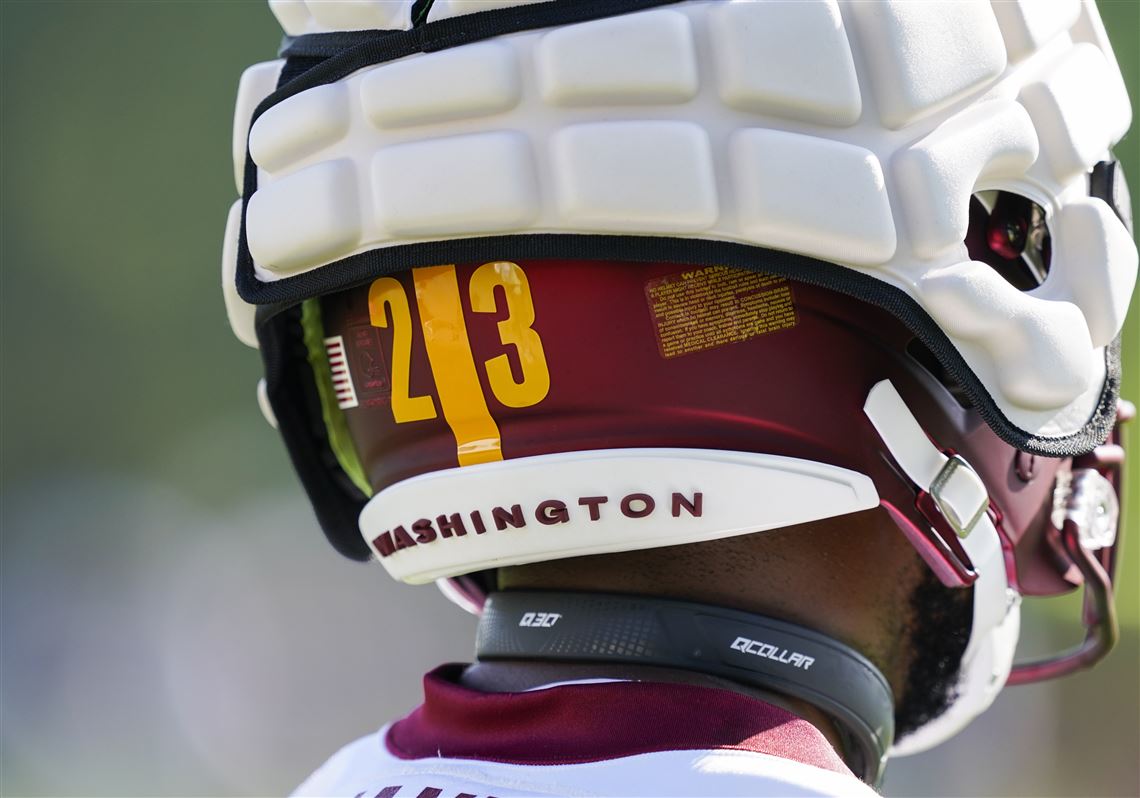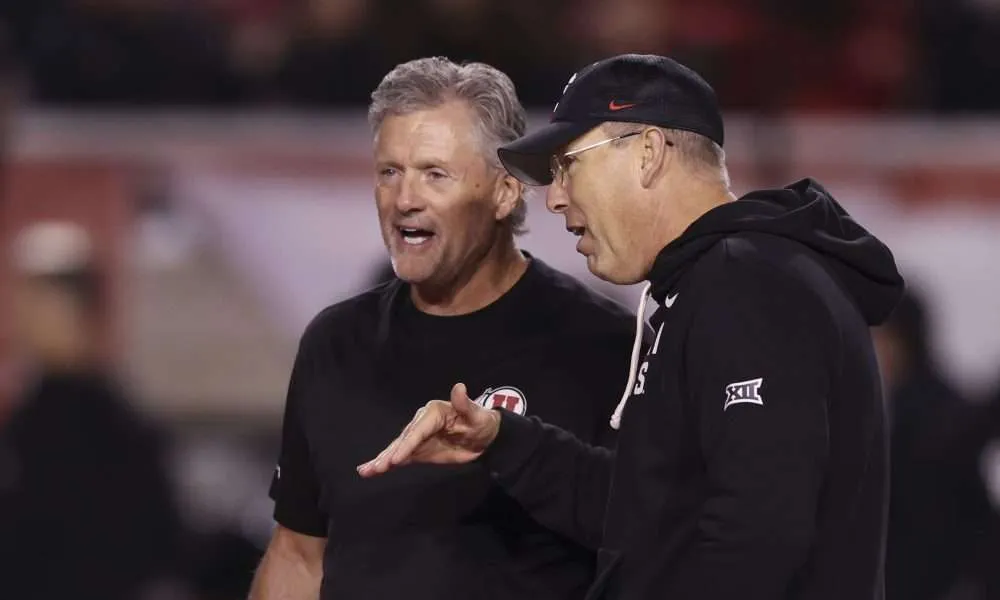Texas A&M volleyball is going where no previous Aggies team has gone before.
Sports
North Florida Athletics Excels With 2023-24 APR Numbers
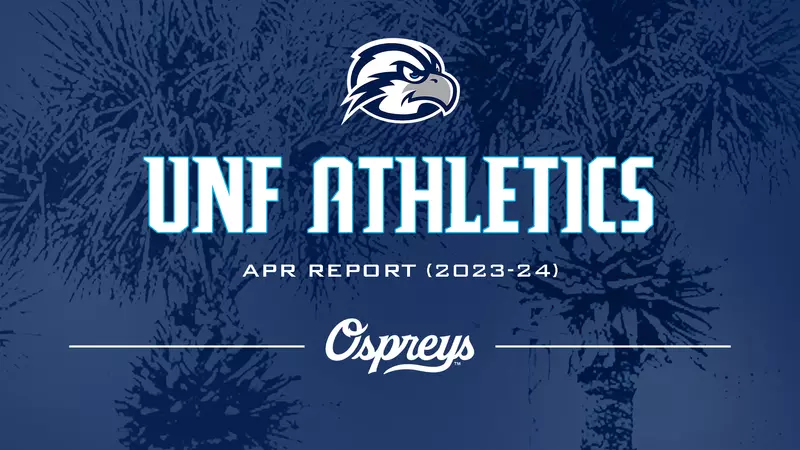
INDIANAPOLIS, Ind. – Highlighted by a school-record 11 programs within the top-10 percent nationally, North Florida Athletics exemplified its academic excellence with the announcement of its 2023-24 APR numbers, announced by the National Collegiate Athletic Association (NCAA).
Men’s basketball, men’s golf, men’s tennis, softball, women’s cross country, women’s golf, women’s beach volleyball, women’s soccer, women’s swimming, women’s tennis and volleyball were listed within the top-10 percent mark in the nation.
10 North Florida programs notched a perfect 1,000 score on the multi-year rate and 14 were perfect in their single-year scores.
The NCAA Division I Academic Progress Rate (APR) is based on data submitted by the institution for the 2020-21, 2021-22, 2022-23 and 2023-24 academic years. The rate also incorporates data from graduation rates, eligibility and retention of student-athletes.
WHAT IS THE APR?
The APR system includes rewards for superior academic performance and penalties for teams that do not achieve certain academic benchmarks. Data collection occurs annually, and results are announced in the spring (from the APR).
North Florida Athletics APR Multi-Year Report Numbers
Men’s Teams
Baseball | 989
Men’s Basketball | 994
Men’s Cross Country | 992
Men’s Golf | 1,000
Men’s Soccer | 981
Men’s Tennis | 1,000
Men’s Track and Field | 990
Women’s Teams
Women’s Basketball | 988
Women’s Cross Country | 1,000
Women’s Golf | 1,000
Softball | 1,000
Women’s Soccer | 1,000
Beach Volleyball | 1,000
Swimming | 1,000
Women’s Tennis | 1,000
Women’s Track and Field | 995
Volleyball | 1,000
North Florida Athletics APR Single-Year Report Numbers | 2023-24
Men’s Teams
Baseball | 981
Men’s Basketball | 1,000
Men’s Cross Country | 1,000
Men’s Golf | 1,000
Men’s Soccer | 1,000
Men’s Tennis | 1,000
Men’s Track and Field | 989
Women’s Teams
Women’s Basketball | 974
Women’s Cross Country | 1,000
Women’s Golf | 1,000
Softball | 1,000
Women’s Soccer | 1,000
Beach Volleyball | 1,000
Swimming | 1,000
Women’s Tennis | 1,000
Women’s Track and Field | 1,000
Volleyball | 1,000
Sports
Live updates as Aggies take 2-0 lead

The Aggies pulled two straight upsets against No. 2 seed Louisville and No. 1 overall seed Nebraska to reach their first Final Four in program history. But they are facing a Pittsburgh squad that has appeared in every national semifinals since 2021.
Article continues below this ad
Led by nine seniors, the Aggies have called themselves the “grittiest team” in the tournament, allowing them to come back and win matches against TCU and Louisville.
“We know how to get down and dirty, and grind when it when it matters most,” outside hitter Logan Lednicky said after the team erased a 1-0 deficit agains TCU.
RELATED: How beating Nebraska helps Aggies volleyball in Final Four
If A&M wins, they will face the winner of the other semifinal: Kentucky vs Wisconsin.
Article continues below this ad

Texas A&M players celebrate winning the NCAA Division I volleyball playoff game against TCU at Reed Arena on Saturday, Dec. 6, 2025 in College Station, Texas.
Here are live updates of Texas A&M’s national semifinal against Pittsburgh:

Ifenna Cos-Okpalla and Logan Lednicky combine for the block on Nebraska’s Harper Murray during the Elite Eight on Dec. 14, 2025 in Lincoln, Neb.
2025 NCAA Tournament, Final Four
Panthers start on a 2-0 run after Pittsburgh makes a few changes on offense. Stowers swings hard cross court to put the Aggies on the board. Waak serves an error. Cos-Okpalla slams down a ball in the middle of the court in a one-on-one. Pitt delivers two free balls to A&M and Lednicky ties the match at three. Stowers serves an error, but Lednicky gets it back by going line. Pitt’s passing improved on Cos-Okpalla’s serve to break the tie. Perkins ties the match with a swing.
Article continues below this ad
Pitt sends a kill from the middle to the back row. Hellmuth tools the block and splits two defenders to send A&M into the redzone with an offspeed shot. Fitch serves an error. Hellmuth’s shot goes wide. Waak sneaks a throwdown in the wide open court. Bayless’ kill sneaks into the back corner to put the Panthers in the redzone. Lednicky’s kill does wide and the error ties the set at 21. Stowers’ kill retakes the lead. A tight set from Pitt leads to an attack error. Babcock is blocked to give A&M set point. Babcock goes wide for a kill but misses high hands.
A gritty point continues Pitt’s 6-0 run. The Panthers are serving out of system balls and the Aggies are having trouble adjusting. Cos-Okpalla stops the Panthers’ 8-0 run. Lednicky fins the back corner to close the gap. Lednicky’s kill is blocked but Pitt hit the antena and Stowers serves an ace to continue the Aggies’ scoring run. Pitt goes to Babcock to break the tie. Cos-Okpalla throws down to tie the set again. Lednicky powers it in front of the net for the Aggies to retake the lead. Perkins swings through the Panthers block, forcing Pitt to call a timeout.
Article continues below this ad
Kelley’s kill couldn’t be dug up and Pitt follows it up with a service error. A&M serves an error. A tight serve from Waak couldn’t connect with Cos-Okpalla’s arm and Waak is called for an error. Babcock goes cross court for the kill and tie. A&M is called for a net violation and the Aggies take the lead.
Lednicky serves a floater that drops over the night and Perkins roofs the Panthers. Hellmuth takes a corner kill. Pitt challenges a Panthers swing was touched but while there was no A&M touch, the call was ruled in. But Pitt serves an error making momentum short lived. Cos-Okpalla blocks gives A&M a four point lead. Pitt calls a timeout.
Article continues below this ad
Stowers is met with a Babcock block at the net. But the lead is short lived when it sails out of bounds. A dig from a Babcock kill sails out, but A&M challenges the ball was in because it tagged the line. The call will stand due to inconclusive video evidence and A&M loses the challenge. But Stowers gets the kill to tie the match. Babcock gives Pitt the lead but Lednicky ties it again. Babcock is leading the Panthers with 11 kills. Perkins hammers the ball into the middle to retake the lead.
Stowers ties the match for the 17th time. Thomas serves an ace for a fifth set point and Stowers hits high hands to take set one.
Article continues below this ad
Babcock adjusts and blocks Lednicky. But Waak sends the ball to Lednicky again who had a different blocker to get set point. Babcock forces a second set point. Lednicky’s shot takes a sharp angle to win the set but Pitt challenges if the ball was in and the call is reversed, forcing a 24-24 tie. Hellmuth tools the block for the third set point. Fitch’s serve forces Pitt out of system but Hellmuth’s power tip is blocked and ties the match at 25. Aggies go to Lednicky for the fourth set point but Hellmuth’s serve sails out. Babcock’s swing gives Pitt its first set point. A&M calls a timeout.
Stowers’ swing breaks the tie. Lednicky goes for the high hands on Babcock to catch the Pitt block off balance. Pitt calls another timeout and the Aggies are hitting .519 with Stowers leading the way with seven kills and zero errors.
Article continues below this ad
Stowers ties it at 18. Pitt takes the lead but A&M challenges that the Panthers were in the net and the call is reversed. Pitt ties it with a quick point. Cos-Okpalla swings to put A&M in the redzone and Stowers goes high for a kill that finds Panther hands. Waak serves an error to put Pitt in the redzone. A tight pass gives Kelley the kill and the tie for Pitt.
Pitt goes on a 3-0 to tie the match. Service from Mosher is coming in deep and hot, forcing the Aggies to play a little out of system. Bayless taps it over for the kill but A&M’s block is coming alive. Cos-Okpalla’s serve goes long to get Pitt within one. Babcock ties the match with a kill after a block touch is deflected. Hellmuth threads the needle of the Pitt block and Babcock goes line. Pitt takes the lead after getting a touch on a long kill. Hellmuth ties it at 17
Article continues below this ad
A&M wins a point after a rally full of Cos-Okpalla blocks. Pitt takes an early time out after A&M has its largest lead of the night. So far, three Aggies (Stowers, Cos-Okpalla and Lednicky) are hitting above .500.
A 2-0 Aggies run ends with two straight points from Bayless. A&M goes for tips early and Pitt uses them to set up easy kills. A swing from Stowers ties the match at three. Lednicky goes for the kill against Babcock and wins the one-on-one; Cos-Okpalla gets the point on a one-on-one in the middle. Lednicky is finding confidence going down the line early and a serve from the senior give the Aggies an ace. Pittsburgh delivers an early service error.
Article continues below this ad
Article continues below this ad
Article continues below this ad
Article continues below this ad
Article continues below this ad
Where:T-Mobile Center in Kansas City, Mo.
Sports
Q-Collar to make NCAA volleyball appearance in Final Four Pitt-A&M match
Sports
Season Review: 2025 Michigan Volleyball

Captains: Maddi Cuchran, Allison Jacobs, Serena Nyambio
Record: 22-11, 11-9 Big Ten Conference (Ninth Place)
NCAA Tournament: Second Round
The University of Michigan volleyball team finished with its best record since 2018 in head coach Erin Virtue‘s third season at the helm of the Wolverines. Rounding out the season with 22 wins, this marked the 15th time in program history the team has won more than 20 games. U-M finished the season with an NCAA Tournament berth, the first time since 2021 and the first time under Virtue.


Team Highlights
• Michigan compiled a 22-11 overall record and an 11-9 Big Ten Conference mark to finish ninth in the league. The Wolverines were picked to finish 10th in the preseason poll and managed to take sets off five of the eight teams ahead of them, including two wins.
• Eleven of U-M’s 27 opponents earned NCAA Tournament berths, with nine coming from the Big Ten to match a conference record. The Wolverines finished 45th in the RPI, 57 places higher than 2024 and went 20-4 in quads 2-4.
• Michigan started the season 6-0 before dropping a five-set match to Virginia; then finished non-conference play with four consecutive wins to give the Wolverines a 10-1 non-conference record. U-M faced five ranked teams in the first eight games of conference play, but finished the Big Ten season 9-3 to earn an NCAA tournament berth for the first time since 2021.
• The Wolverines got a statement win, defeating then-No. 10-ranked Minnesota — which finished 14th in the RPI and 17th in the AVCA poll. After dropping the first set, U-M went on to dominate the next three sets winning 25-12, 25-14, 25-12 led by a 20-kill performance from Allison Jacobs. U-M finished the match hitting .383 and held Minnesota to a .093 hitting percentage with the help of nine blocks and 53 digs.
• Another highlight came via a five-set win against reigning national champion and No. 19-ranked Penn State. The Nittany Lions controlled the first set with the Wolverines always following close behind before eventually falling 25-21. After falling behind early 11-6 in the second set, U-M battled back to win 25-21. An overall close third set ended in a 28-26 Penn State victory. After a close fourth and fifth set, Michigan won the battle. Four Wolverines tallied double-digit kills, led by 18 each from Jacobs and Ella Demetrician, while Cymarah Gordon added 13 and Serena Nyambio recorded 10.
• Michigan earned its 21st NCAA Tournament appearance, and first since 2021, heading to the Pittsburgh regional where the Wolverines faced off against No.8-seeded Xavier in the first round. U-M won in straight sets (25-19, 25-15, 25-23) for its first NCAA Tournament win since 2019. The Maize and Blue was led by 19 kills from Jacobs and four aces from Maddi Cuchran. The Wolverines then faced off against No.1-seeded Pittsburgh, dropping the first two sets by just two points but fell in three sets.
• The Wolverines retained the state pride flag for the second year in a row. U-M and Michigan State split the series with each program sweeping at home, but U-M held the Spartans to one fewer point over the matches. In the Wolverine win, Cuchran recorded her 1,000th career dig.
• U-M swept Ohio State in both matches this season for the first time since 2019. In Columbus, Michigan hit .471 against the Buckeyes and held OSU to .067, including a -.036 hitting percentage in a 25-9 set-two win. Across the two matches, Jacobs totaled 27 kills and Demetrician added 24 kills, with both recording double-digit kills in both matches.
• Michigan hosted a record 12 games at Crisler Center during the 2025 season. They went 9-3 in those matches, with notable wins over Minnesota, Penn State, and rivals Ohio State and Michigan State, while hosting a record 12,707 fans in a match against Nebraska.
• The Nebraska match marked the first time in program history that Michigan sold out Crisler, and it was just the fourth women’s sports event sell out Crisler. The Wolverines had the highest average attendance in program history, with a 50 percent increase in average attendance compared to 2024. U-M finished the season ranking 17th in the NCAA in total attendance and was 21st in average attendance.
Individual Highlights
• Earning All-Big Ten first-team status and being one of nine unanimous selections, Jacobs had a phenomenal final collegiate season. She tallied 473 kills in 33 matches, including a career-high 26 kills in a double-double performance against Iowa, one of seven double-double matches this season. Jacobs set a new career high in aces with 34, tied for the team lead, and totaled 227 digs (third) and was fifth on the team with 63 total blocks. She finished the season with the 10th-most kills in a single season in program history.
• Making the All-Big Ten second team, Nyambio had a strong senior season. Nyambio became the first U-M player since 2003 with 100 blocks or more in a Big Ten season, recording 104, to tie the program record. She finished the season ranking fourth in the Big Ten and 27th in the nation with a .394 hitting percentage over 449 total attempts, recording 220 kills. Nyambio also led the team with 151 total blocks, good for third in the Big Ten and 22nd in the nation. She finished her career seventh in total blocks, seventh in block assists and 12th in solo blocks.
• Sophomore Jenna Hanes led the Wolverines with a .450 hitting percentage with 185 kills and 23 errors over 360 total attempts. Hanes had the highest hitting percentage in program history since the rally-scoring era began in 2001, with a minimum of 300 attacks. She never had more than two errors in a match and was errorless in 15 matches. Hanes also contributed defensively with 118 total blocks, good for second on the team and 14th in the Big Ten this season.
• Junior Morgan Burke led the Wolverines as their starting setter, playing in all 121 sets and starting all 33 matches, totaling 791 assists this season. Burke recorded 20 assists or more in 20 matches this season, including a career-high 56 against Rutgers. She sits eighth all-time in career assists at Michigan with 2,447. Burke was also second on the team in digs with 241 and tied for the team lead with 34 aces.
• Cuchran led the team with 408 digs, finishing her career with 1,083 — the 13th-best total in program history. She tallied double-digit digs in 24 matches this season, including her first two career double-doubles in back-to-back matches, recording 10 assists against Washington and Oregon. Cuchran added a career-high 27 aces, including four in the NCAA Tournament win over Xavier, to become just the fourth Wolverine with four aces or more in an NCAA Tournament match.
• Demetrician was second on the team in kills with 284 on 700 total attempts, for a .214 hitting percentage. She registered seven double-doubles, including an 18-kill, 11-dig performance against Penn State. Demetrician had 190 total digs this season, good for fourth on the team, and added 20 aces and 41 blocks.
• Lydia Johnson finished the season with a career-best 183 kills and 52 errors on 440 total attempts to give her a .298 hitting percentage. Johnson was also third on the team in total blocks (65). Her strongest match of the season came in the upset win over Minnesota with 14 kills on 22 swings along with three block assists.
• After an injury in last year’s preseason, Gordon contributed in her redshirt freshman season. She had 129 kills on the season and added 56 total blocks, with her season high in kills (13) coming against No. 19 Penn State. Gordon started the final 14 matches, during which U-M went 10-4.
Honors and Awards

Morgan
Burke

Maddi
Cuchran

Ella
Demetrician

Jenna
Hanes

Allison
Jacobs

Serena
Nyambio
American Volleyball Coaches Association
All-America (Honorable Mention): Allison Jacobs
All-North Region (First Team): Allison Jacobs, Serena Nyambio
Big Ten Conference
All-Big Ten (First Team): Allison Jacobs
All-Big Ten (Second Team): Serena Nyambio
Sportsmanship Award: Sydney Schnichels
College Sport Communicators
Academic All-America (Third Team): Allison Jacobs
Academic All-Region: Morgan Burke, Allison Jacobs, Lydia Johnson, Serena Nyambio
Academic All-Big Ten
Morgan Burke, Jr., Movement Science
Maddi Cuchran, Gr., Management
Ella Demetrician, So., LSA undeclared
Camille Edwards, R-Fr., Sport Management
Carly Greskovics, Jr., Sport Management
Jenna Hanes, So., Business Administration
Allison Jacobs, Gr., Management
Lydia Johnson, Jr., Movement Science
Trixie McMillin, So., Engineering
Serena Nyambio, Sr., Biology, Health, & Society
Amalia Simmons, Sr., Biopsychology, Cognition, & Neuroscience
Ellie White, So., LSA undeclared
Sports
USC Men’s Volleyball Announces 2026 Schedule
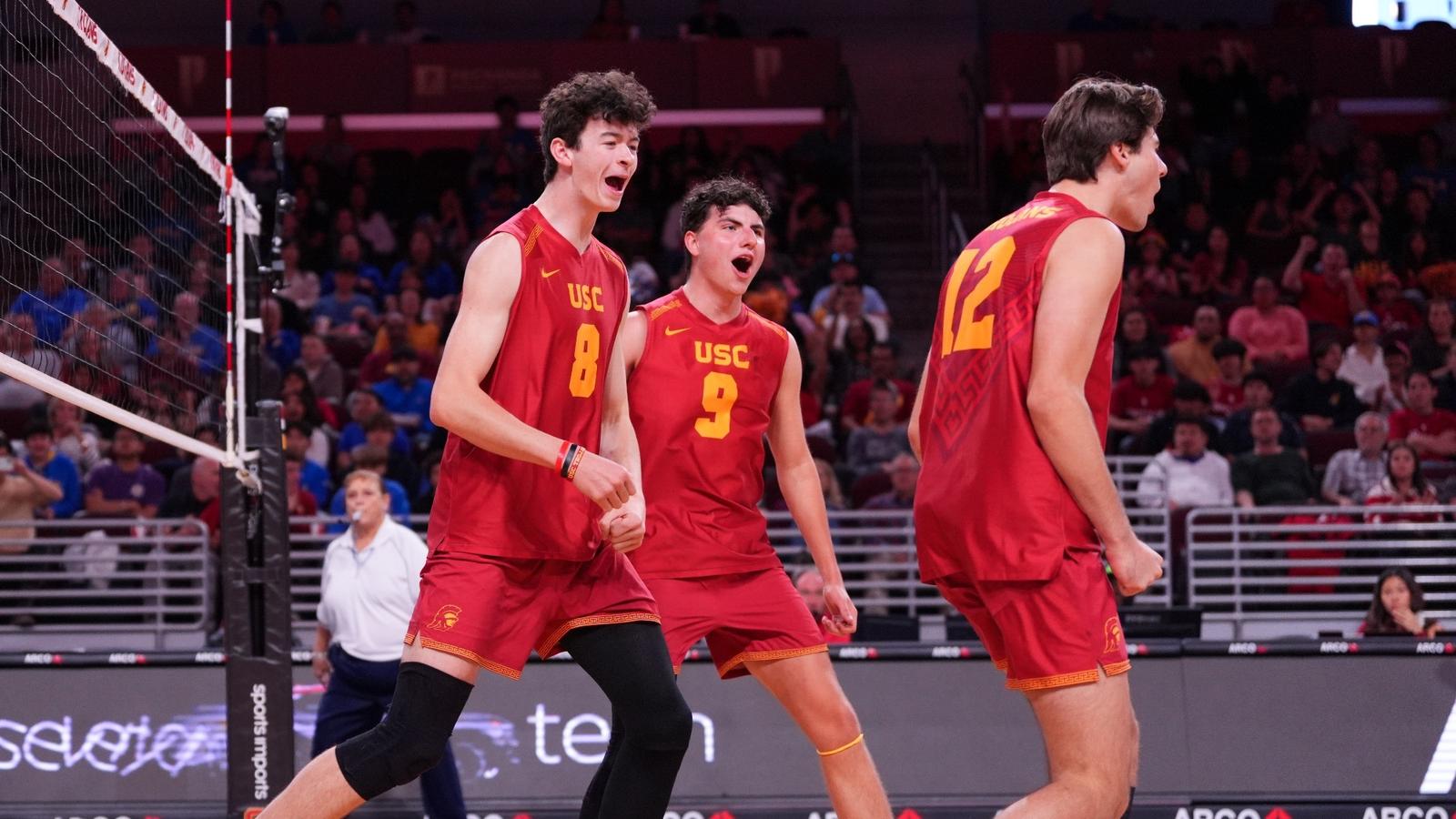
NONCONFERENCE
The Trojans open 2026 as host to St. Thomas Aquinas College (Jan. 10) and will face the Spartans at Galen Center for a 5 p.m. PT Saturday-night bout. The next week, USC goes to Costa Mesa for its first road test and takes on Vanguard at the Freed Center for Leadership on Jan. 15. The Trojans’ next five matches will be played at Galen Center starting with Princeton (Jan. 16) followed by Fort Valley State (Jan. 24), Ohio State (Jan. 30), Cal State Northridge (Feb. 4), and UC Santa Barbara (Feb. 7).
USC plays a home-and-home with UC Irvine ahead of Valentine’s weekend and visits the Anteaters for a mid-week match on Feb. 11 at 6 p.m. PT at Bren Events Center. UCI then comes to Galen Center for a Friday-night rematch on Feb. 13 set at 7 p.m.
To conclude the month of February, USC will take part in a four-team tournament hosted at the Honda Center Feb. 19-20. The Anaheim arena will serve as the volleyball venue for the 2028 Olympic Games and the tournament—which will also feature UCLA from the MPSF and Big West foes Hawai’i and Long Beach State—will award an NIL prize to the winner.
USC’s final nonconference regular-season match will be against Penn State. The Trojans host the Nittany Lions for a mid-conference one-off on March 14 at Galen Center.
MPSF CONFERENCE
USC—which was picked to finish second in a preseason poll of the league’s head coaches—opens MPSF play with crosstown rival UCLA and will meet the Bruins on March 4 for a 7 p.m. match at Galen Center. The teams then play a second time on March 6 at Pauley Pavilion. Each home team won in last spring’s meetings. The Trojans then head to Concordia to face the Eagles on March 12 in Irvine, Calif. USC plays CUI just once in an unbalanced conference schedule.
The Trojans then play their next six MPSF matches at home and host conference newcomer Jessup in back-to-back matches at USC’s North Gym (March 20-21). Menlo will visit Galen Center for matches on March 27 and 28. While the Oaks joined the MPSF for the 2025 season, USC did not face Menlo last spring. Stanford then comes to Galen Center for the Trojans’ first two matches of the month of April. The teams will meet in Friday-Saturday matches (April 3-4) set for 7 p.m. and 5 p.m. respectively.
In its first and only out-of-state regular-season competition, the Trojans head to Provo, Utah, to take on BYU (April 10-11) at the Smith Fieldhouse. USC then closes the regular season with 2025 MPSF champion Pepperdine. The Trojans host the Waves on April 16 for Senior Night and then visit Pepperdine for the rematch on April 18 at Firestone Fieldhouse.
MPSF TOURNAMENT
BYU and the Smith Fieldhouse will serve as host of the 2026 MPSF Tournament set for April 22-25 in Provo, Utah. Quarterfinal matches will be played on Wednesday (April 22) followed by two semifinal matches on Thursday (April 23). The MPSF championship match is set for Saturday evening, April 25. The winner receives the league’s automatic berth to the NCAA Championship set to be played May 9-11 at UCLA’s Pauley Pavilion.
In 2025, the Trojans went 21-7, finished second in the MPSF (8-4), and were awarded the second seed into the conference tournament. There, USC finished as runner-up to Pepperdine, which hosted the championship in Malibu, Calif. USC opened the year with a nine-match win streak for its best start to a season since 1991 (28-0) and won 10 matches in a row (Feb. 26-April 3) for the program’s longest win streak since 2012 (18 in a row). It was head coach Jeff Nygaard‘s second 20-win season (20th in program history). USC led the MPSF for many weeks in all statistical categories but aces and finished the season as the NCAA leader in blocks (2.86 bps) with 16 matches in double-digits. The Trojans set a new school record for hitting percentage in a match (.691 vs. Dominican, Feb. 8) and hit better than .300 in 19 matches (plus-.400 in 10 contests). Dillon Klein was named to the AVCA All-America first team and was a first-team All-MPSF choice.
For more information on the USC men’s volleyball team and to purchase tickets, please visit USCTrojans.com/MVB. Fans of the Trojans can follow @USCmensvolley on Instagram, X, and Facebook.
Sports
Final Four live score updates
Updated Dec. 18, 2025, 6:23 p.m. ET
No. 1 seed Pittsburgh women’s volleyball will face off against No. 3 seed Texas A&M at the 2025 NCAA volleyball national semifinals on Thursday at T-Mobile Center in Kansas City, Missouri.
Texas A&M upset No. 1 overall seed Nebraska in a thrilling five-set match to advance to the Final Four for the first time in program history, while Pitt is set to make its fifth straight Final Four appearance after dropping only one set throughout the NCAA tournament.
Neither Pitt nor Texas A&M has won a national title or made a national championship appearance in program history. One team will break through on Thursday. Follow along as USA TODAY Sports provides live updates:
NCAA VOLLEYBALL FINAL FOUR: Schedule, scores, highlights
MORE:The 11 best NCAA volleyball players in transfer portal
When is Pittsburgh vs. Texas A&M volleyball?
No. 1 Pitt (30-4) faces No. 3 Texas A&M (27-4) on Thursday, Dec. 18 at 6:30 p.m. ET at the T-Mobile Center in Kansas City, Missouri.
Pittsburgh vs. Texas A&M volleyball: Channel, streaming
- Date: Thursday, Dec. 18
- Time: 6:30 p.m ET (5:30 p.m. CT)
- Location: T-Mobile Center (Kansas City, Missouri)
- Channel: ESPN
- Stream: ESPN, Fubo
Head coach: Dan Fisher
- 3 Emery Dupes | L/DS 5-6 – Redshirt Senior
- 5 Olivia Babcock | RS 6-4 – Junior
- 8 Blaire Bayless | OH 6-2 – Junior
- 10 Marina Pezelj | OH 6-1 – Freshman
- 13 Mallorie Meyer | L/DS 5-7 – Sophomore
- 17 Brook Mosher | S 6-0 – Redshirt Senior
- 20 Abbey Emch | MB 6-4 – Freshman
- 21 Bre Kelley | MB 6-4 – Redshirt Senior
Head coach: Jamie Morrison
- 37 Kyndal Stowers | OH 5-11 – Sophomore
- 1 Ifenna Cos-Okpalla | MB 6-2 – Senior
- 2 Addi Applegate | L/DS 5-5 – Freshman
- 9 Logan Lednicky | OPP 6-3 – Senior
- 12 Ava Underwood | L/DS 5-7 – Senior
- 16 Maddie Waak | S 5-10 – Senior
Olivia Babcock stats
The 6-foot-4 right side hitter already won 2025 ACC player of the year for the second straight season after setting career highs in kills per set (5.11) and digs per set (2.11) this season. She set a new program record with 45 kills vs. North Carolina on Nov. 2.
Texas A&M’s Kyndal Stowers shares personal triumph after 4 concussions
KANSAS CITY, MO ― On any given day, Texas A&M outside hitter Kyndal Stowers brings three different versions of herself to the court.
One version is very relaxed. The goal is simple: get out on the court, win and leave. Another version of Stowers is more stealthy, unsuspecting. She wins, but the opponents never see it coming. Then, there’s the version that boldly claims victory and lets the opponent know all about it. Every version of Stowers has been seemingly influenced by her journey back to the volleyball court.
The sophomore outside hitter was forced to medically retire after her freshman season with the Baylor Bears. In a matter of months, she unexpectedly suffered four concussions, forcing a very frustrated Stowers to rethink whether she’d ever play volleyball again. Read Meghan Hall’s full story here.
NCAA volleyball player of the year finalists
The 2025 AVCA Player of the Year shortlist was narrowed to four finalists on Monday: Pitt junior right side hitter Olivia Babcock, Wisconsin senior outside hitter Mimi Colyer, Kentucky senior outside hitter Eva Hudson and Nebraska junior setter Bergen Reilly.
The winner will be announced on Friday, Dec. 19, ahead of the national championship game on Sunday, Dec. 21 (ABC). Babcock, the reigning 2024 Player of the Year, could become the fifth player to win the award in back-to-back seasons and first since Stanford’s Kathryn Plummer in 2017-2018.
Texas A&M’s Jamie Morrison wins coach of the year
Texas A&M Aggies head coach Jamie Morrison is the AVCA Coach of the Year.
Morrison, who is in his third season with the program, led the Aggies to a 27-4 regular-season record and a second-place finish in the SEC with a 14-1 conference record. Under his leadership, four Texas A&M players (Ifenna Cos-Okpalla, Logan Lednicky, Maddie Waak, Kyndal Stowers) earned AVCA All-American honors this season. — Meghan Hall
NCAA volleyball transfer portal 2026
The 2025 NCAA women’s college volleyball tournament is down to the Final Four with Kentucky, Pittsburgh, Wisconsin and Texas A&M advancing to the semifinals, but it’s never too early to look ahead to next season.
As the NCAA crowns a national champion this weekend, some of the biggest names in the sport have entered the transfer portal in search of a new home for the 2026 season. Check out the best players available here.
LOVB pro volleyball to add expansion franchise in San Francisco
On Thursday, the women’s professional indoor volleyball league announced it’s expanding to the Bay Area with the LOVB San Francisco franchise, bringing the total number of teams in the league to nine by 2027.
The second season will begin on Jan. 7, 2026, but the field of teams will expand from six to nine in 2027 during the league’s third season, with the addition of LOVB Los Angeles, LOVB Minnesota and LOVB San Francisco.
The USA TODAY app gets you to the heart of the news — fast. Download for award-winning coverage, crosswords, audio storytelling, the eNewspaper and more.
Sports
Assistant Volleyball Coach, Girls – IMG Academy

About IMG Academy
Named one of the Best and Brightest Companies to Work For in the Nation in 2024, IMG Academy is the world’s leading sports education brand, providing a holistic education model that empowers student-athletes to win their future, preparing them for college and for life. IMG Academy provides growth opportunities for all student-athletes through an innovative suite of on-campus and online experiences:
- Boarding school and camps, via a state-of-the-art campus in Bradenton, Fla.
- Online coaching via the IMG Academy+ brand, with a focus on personal development through the lens of sport and performance
- Online college recruiting, via the NCSA brand, providing content, tools, coaching and access to a network of 40,000 college coaches
The Assistant Volleyball Coach, Girls is responsible for all aspects of training and coaching student-athletes.
Position Responsibilities:
- Prepares a training program for all student-athletes.
- Assesses the skill development of each student-athlete, and partners with school staff and performance coaches to ensure their ongoing comprehensive development.
- Assists with the psychological preparation of the student-athlete in both pre-game and post-game.
- Develops motivational approach to practices and games.
- Interacts with the student-athlete as a mentor and as an educator of the sport.
- Responsible for delivering a high-quality program that aids in the annual retention of student-athletes.
- Assists in the college placement of the student-athlete.
- Supports and maintains a high level of understanding of the four-year model for the Academy program student-athlete.
- Effectively communicates to student-athletes and their parents/guardians.
- Partners with the student-athlete’s parent/guardian regarding their overall development.
- Assists sport advisors in generating new leads and maintaining an accurate pipeline for enrollments.
- Assures that proper safety is maintained.
- Travels to tournaments and other events as needed.
- Adheres to all company policies, procedures and business ethic codes.
- Performs other duties as assigned.
Knowledge, Skills and Abilities:
- Experience in coaching and/or playing at the professional and/or collegiate level.
- Bachelor’s degree in an appropriate field.
- Proficiency in training and instructional techniques.
- Strong commitment to student-athletes and their development academically, athletically, and socially.
- Desire to work collaboratively with colleagues.
- Excellent written and verbal communication skills.
- Commitment to comprehensive excellence.
Preferred Skills:
- Bilingual
- CPR Certification
- Valid driver’s license with ability to drive for tournaments, games, travel
Physical Demands and Work Environment:
- Ability to handle outdoor conditions for a reasonable period of time.
- Ability to move around campus including gym, turf, fields, etc.
- Ability to work flexible hours to include nights, weekends and holidays.
#LI-NS1
Background Requirements:
- Requires a background check upon offer
- Requires a drug test upon offer
As a full-time member of our team, you will enjoy a comprehensive offering listed below. Connect with your talent acquisition specialist to learn more about benefits for our part-time and seasonal/temporary roles.
- Comprehensive Medical, Dental and Vision
- Flexible Spending Account and Health Savings Account options
- 401k with an Employer Match
- Short Term and Long Term Disability
- Group and Supplemental Life & AD&D
- Gym Discount Program
- Pet Insurance
- Wellbeing Program
- and more!
Don’t meet every single requirement? We are dedicated to building a diverse, inclusive, authentic workplace, so if you’re excited about this role but your past experience doesn’t align perfectly with every qualification in the job description, we encourage you to apply anyway. You may be just the right candidate for this or other roles.
Get to know us better:
www.imgacademy.com
www.imgacademy.com/careers
IMG Academy provides equal employment opportunities to all employees and applicants for employment and prohibits discrimination and harassment of any type without regard to race, color, religion, age, sex, national origin, disability status, genetics, protected veteran status, sexual orientation, gender identity or expression, or any other characteristic protected by federal, state or local laws.
-

 Motorsports1 week ago
Motorsports1 week agoSoundGear Named Entitlement Sponsor of Spears CARS Tour Southwest Opener
-
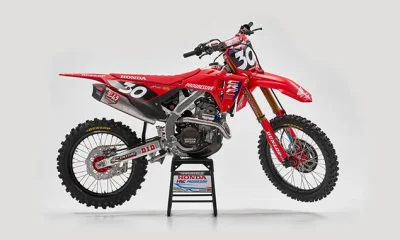
 Motorsports3 weeks ago
Motorsports3 weeks agoJo Shimoda Undergoes Back Surgery
-

 NIL3 weeks ago
NIL3 weeks agoBowl Projections: ESPN predicts 12-team College Football Playoff bracket, full bowl slate after Week 14
-

 Rec Sports3 weeks ago
Rec Sports3 weeks agoHow this startup (and a KC sports icon) turned young players into card-carrying legends overnight
-

 Rec Sports3 weeks ago
Rec Sports3 weeks agoRobert “Bobby” Lewis Hardin, 56
-
Sports3 weeks ago
Wisconsin volleyball sweeps Minnesota with ease in ranked rivalry win
-
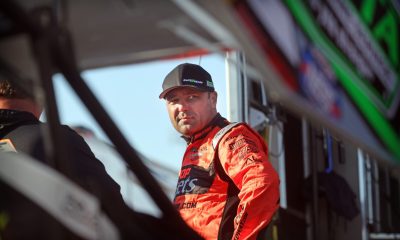
 Motorsports1 week ago
Motorsports1 week agoDonny Schatz finds new home for 2026, inks full-time deal with CJB Motorsports – InForum
-

 Motorsports3 weeks ago
Motorsports3 weeks agoIncreased Purses, 19 Different Tracks Highlight 2026 Great Lakes Super Sprints Schedule – Speedway Digest
-

 Rec Sports2 weeks ago
Rec Sports2 weeks agoHow Donald Trump became FIFA’s ‘soccer president’ long before World Cup draw
-
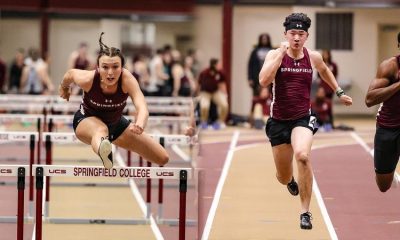
 Sports2 weeks ago
Sports2 weeks agoMen’s and Women’s Track and Field Release 2026 Indoor Schedule with Opener Slated for December 6 at Home











































